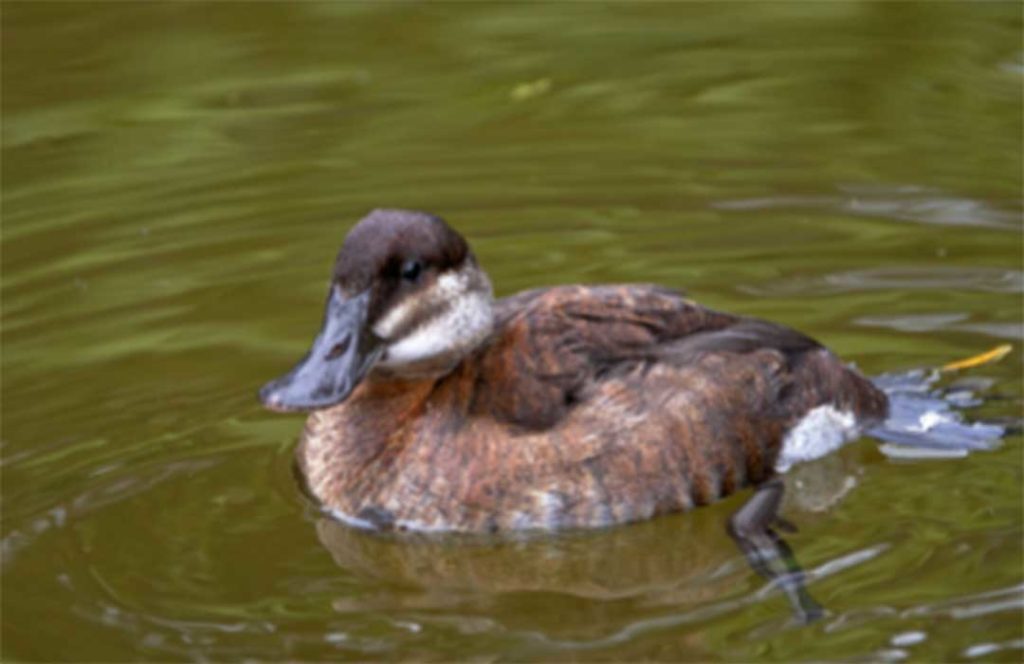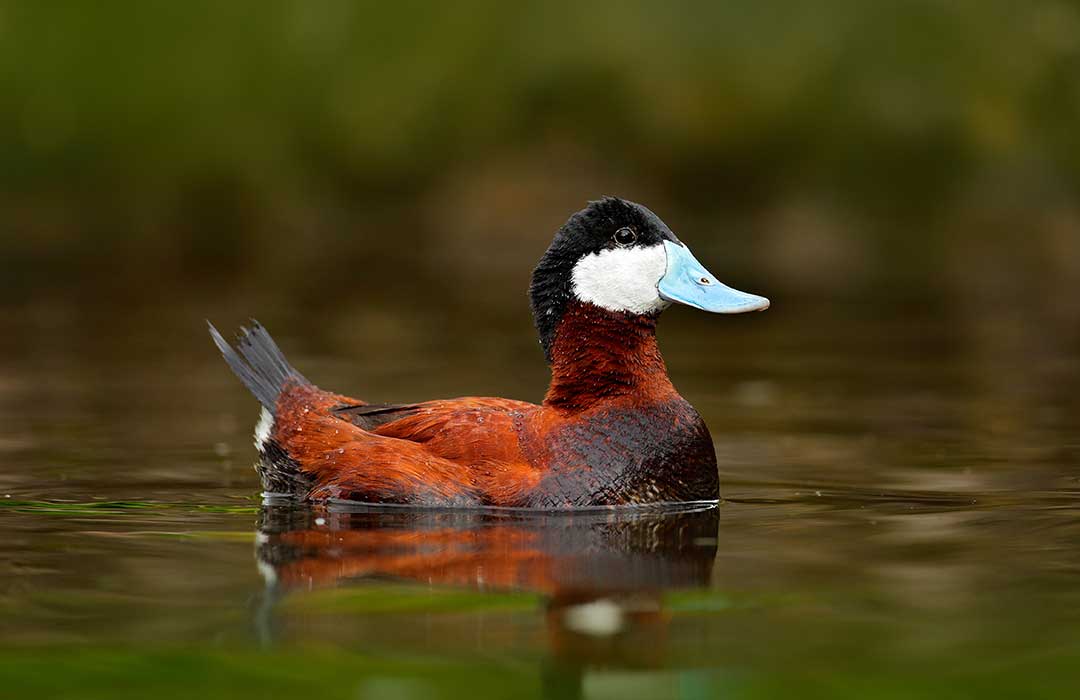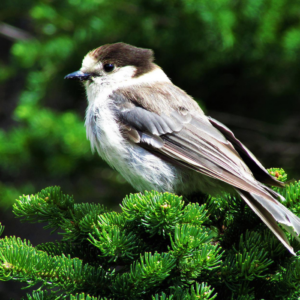Get To Know This Year’s Featured World Migratory Bird Day Species: The Ruddy Duck


VITAL SIGNS
- Common name: Ruddy Duck
- Latin name: Oxyura jamaicensis
- Range: Native to North and South America. Ruddy Ducks nest in the prairie pothole regions of Canada, spanning the southern half of Alberta, Saskatchewan and Manitoba. Their Winter range includes most of southern North America, travelling as far south as Guatemala and El Salvador
- Lifespan: Ruddy Ducks can live up to 13 years in the wild
- Size: Females and males are similar in size. Both sexes typically measure 35-43 cm in length, weighing between 300-850 g, with a wingspan of 56-62 cm
- Population estimate: There is an estimated population of 500,000-1,000,000 individuals in Canada
THE FACTS
Ruddy Ducks are known to breed in wetlands and reservoirs—86% of their breeding population is found in the prairie pothole region, located in south-central Canada and the northern and central United States. When migrating, however, the ducks stop in a variety of habitats. Upon arrival at their breeding grounds, males begin courtship by swimming around a female, tilting their tail and stretching their neck, beginning their courtship dance.
Ruddy ducks, despite being relatively small, lay some of the largest duck eggs in the world! Egg sizes range from 5.9-6.8 cm long, with widths of 4.3-4.8 cm. Females can lay anywhere from 6 to 10 eggs and have an incubation period of 23 to 26 days.
In terms of appearance, male ducks have black-capped heads and bright white cheeks. Depending on the season, their plumage colours vary. In the summer, their bodies are a rich chestnut colour and their bills are bright blue. In winter, their bodies take on a gray, brown colour and their bills are a much duller shade of brown. Females, on the other hand, are brown year-round and lack the bright white cheek patch of the males, instead of having a dark stripe.
Ruddy ducks are somewhat uncoordinated walkers, their legs are positioned further back on their body which makes for walking difficulties. Despite being clumsy on land, this feature makes them very agile in water, they are easily able to sink and dive underwater. With one push of their feet, the ducks are able to dive a metre underwater.
THE STORY
As with many species, habitat loss and degradation are a main concern for the Ruddy Duck. Specifically, water pollutants such as polychlorinated biphenyl, selenium, heavy metals, and lead have been shown to accumulate in the Ruddy Duck1. The population of Ruddy Ducks in Chesapeake Bay dropped drastically over a period from 1955 to 1979, due to multiple factors including invasive species and pollution. Because of their heavy reliance on wetlands and marshes, the species is heavily impacted by wetland drainage.
WHAT IS BEING DONE
The Ruddy Duck is protected under the Migratory Birds Convention Act in Canada, as well as the United States Migratory Bird Act. The species is classified as “Least Concern” by the International Union for Conservation of Nature (IUCN and has a “Secure” status under the Wild Species designation. As of 2013, the Ruddy Duck was listed as being above the population goal in accordance with the North American Waterfowl Management Plan.
WHAT YOU CAN DO
Advocating for the health and preservation of local wetlands and marshes is extremely important for Ruddy Ducks (and a number of other species!) because of their high levels of biodiversity. Getting involved with local conservation groups or writing to local government officials can help save these areas. Spreading awareness and educating others on the importance of these areas is one of the best ways to help the Ruddy Duck.
If you want to take a stand for Ruddy Ducks in your community, and save bird lives more generally, get involved with a local Bird Team in your community to work towards becoming Bird Friendly City Certified or Host and participate in an upcoming World Migratory Bird Day event near you!
- 1Canadian Wildlife Service Waterfowl Committee. 2014. Population Status of Migratory Game Birds in Canada: November 2014. CWS Migratory Birds Regulatory Report Number 44 https://wildlife-species.canada.ca/bird-status/oiseau-bird-eng.aspx?sY=2014&sL=e&sM=p1&sB=RUDU#:~:text=The%20Ruddy%20Duck%20is%20not,throughout%20its%20Canadian%20breeding%20range.
- 2The Cornell Lab, 2019. All About Birds, Ruddy Duck https://www.allaboutbirds.org/guide/Ruddy_Duck/id
- 3Hall, L. 2008. “Oxyura jamaicensis” (On-line), Animal Diversity Web. Accessed March 29, 2022 at https://animaldiversity.org/accounts/Oxyura_jamaicensis/



